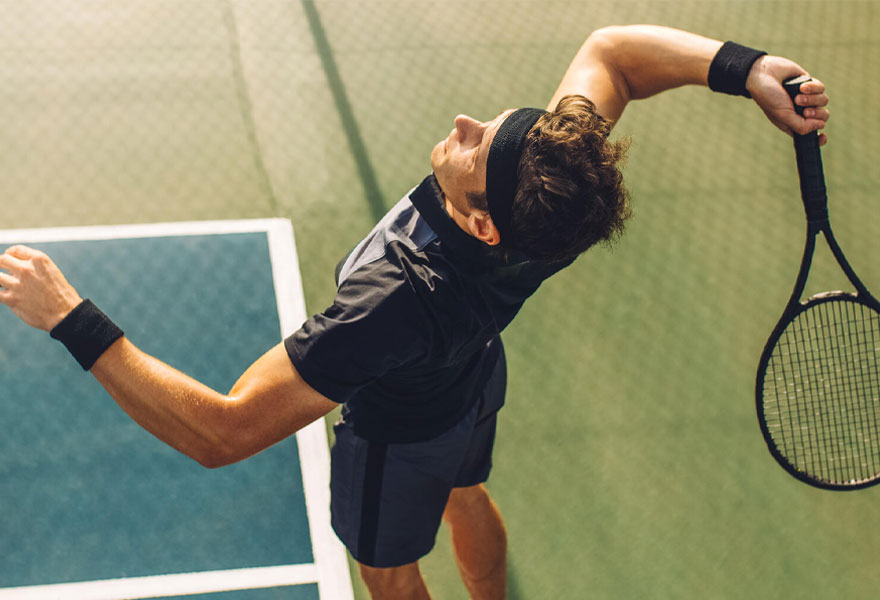With patients at the forefront of everything we do here at Mayo Clinic Orthopedics and Sports Medicine, our experts have been developing and researching ways to perform more traditionally open surgeries arthroscopically. What used to require large, open incisions is now able to be done using minimally-invasive arthroscopic techniques that allow for smaller incisions, less complications, high success rates of return to play, and faster healing.
During arthroscopic surgery, a small camera and pencil-thin surgical tools are inserted into a joint through a few incisions about the size of a fingertip. These outpatient procedures offer patients the benefit of getting back to their normal sports or activity sooner than with standard open surgery where skin and tissue are cut. Some of Mayo’s Orthopedics and Sports Medicine innovative arthroscopic surgeries:
Arthroscopic ACL reconstruction surgery uses either autograft tissue (from the patient’s own body) or allograft tissue (from a donor), and has shown high rates of recovery, with anywhere from 85% to 95% return to sport.
Hip preservation and impingement/FAI
Hip preservation surgery in general is relatively new over the last two decades, and Mayo is leading the way in this field, with excellent published patient reported outcomes.
Labral repair: The surgeon arthroscopically repairs the labrum and shaves down the bone on the femoral head or acetabulum, giving patients smooth hip motion.
Labral reconstruction: Utilizing either autograft or allograft tissue to form a new labrum, we are now able, arthroscopically, to address tears in the labrum that were previously deemed irreparable.
Most of these surgeries are done within an hour or two, with a recovery time of between six and nine months and high return to sports rates of 85-95%. Certain criteria are considered and need to be met to be a candidate.
Depending on what surgical treatment may be needed, whether to repair or restore knee cartilage, Mayo offers minimally-invasive procedures, the most innovative of which uses regenerative medicine. Because cartilage doesn’t have its own blood supply, and therefore can’t heal itself, it is challenging to treat. That is why Mayo Clinic orthopedic surgeons began researching and pioneering cartilage restoration techniques that use the body’s own tissues and cells to promote healing.
Patients typically return home the day of surgery and can go back to normal activities within three to four months. Full return to sports takes between nine and 12 months, as this time is needed for the cartilage to grow and heal, and muscle control regained. “Recovery times have been less, patient results have been really fantastic, but overall, I think having one recovery and one surgery is just a much easier journey for patients, Aaron Krych, M.D., orthopedic surgeon, Chair, Mayo Clinic Orthopedics and Sports Medicine, says.
Meniscus repair: At Mayo we aim to repair and preserve, not remove, the meniscus, and the techniques we have developed include repairing the torn edges of the meniscus arthroscopically. “We’ve developed different surgical techniques that are specific to each tear type,” Dr. Krych explains, “that help us repair more complex tears and save more meniscus than we have in the past.
Meniscus transplant: For patients with severe meniscal injuries, and who do not have advanced arthritis, a meniscus transplant may be an option. Arthroscopically, “we can now transplant the meniscus from a cadaver (allograft) and restore the bio mechanic function,” explains Kelechi Okoroha, M.D., orthopedic surgeon, Mayo Clinic Orthopedics and Sports Medicine, team physician for the Minnesota Timberwolves. The recovery from a meniscus transplant can be extensive, with the use of crutches for up to 12 weeks, and six to nine months of physical therapy.
Tendon repair: When one or more tendons become detached from the bone, we are now able to reattach the tendon to the bone through arthroscopic surgery.
Irreparable tears: “I think the area where we’ve seen the greatest advance in the last five years are for those tears that historically would be considered irreparable,” says Christopher Camp, M.D., orthopedic surgeon, Mayo Clinic Orthopedics and Sports Medicine, Medical Director and team physician for the Minnesota Twins. Now, we repair the tendon as best we can, then use a graft from the patient’s own body, or a donor, to fill in the remaining defect. For the surgeries that require grafts, recovery takes about six months for the graft to become incorporated.
These surgeries have proven to be extremely predictable in their ability to improve pain and range of motion, with good results at improving strength as long as a physical therapy program is followed. Data shows that even at five years out, these results hold up and can reliably relieve pain and improve range of motion.
It is crucial that all these arthroscopic surgeries be followed by rehabilitation and physical therapy. At our specialty clinics, physicians collaborate with physical therapists, athletic trainers, and other sports medicine experts to create, and then guide, patients on their rehab and recovery plan.
Coming to Mayo means having access to cutting-edge procedures, many of which our own sports medicine experts have been part of researching and developing. “If you’re thinking about receiving a minimally-invasive treatment at Mayo Clinic Sports Medicine you can be assured that our whole team has spent months or years developing this procedure before considering offering it to a patient in the clinic,” says Brennan Boettcher, D.O., sports medicine physician, Mayo Clinic Orthopedics and Sports Medicine. No matter the need, our specialists address all issues and work together to come up with the best treatment for you. Find out more by contacting one of our clinics at the Rochester, MN or Minneapolis, MN locations.
For more information, or to make an appointment, please visit sportsmedicine.mayoclinic.org.






